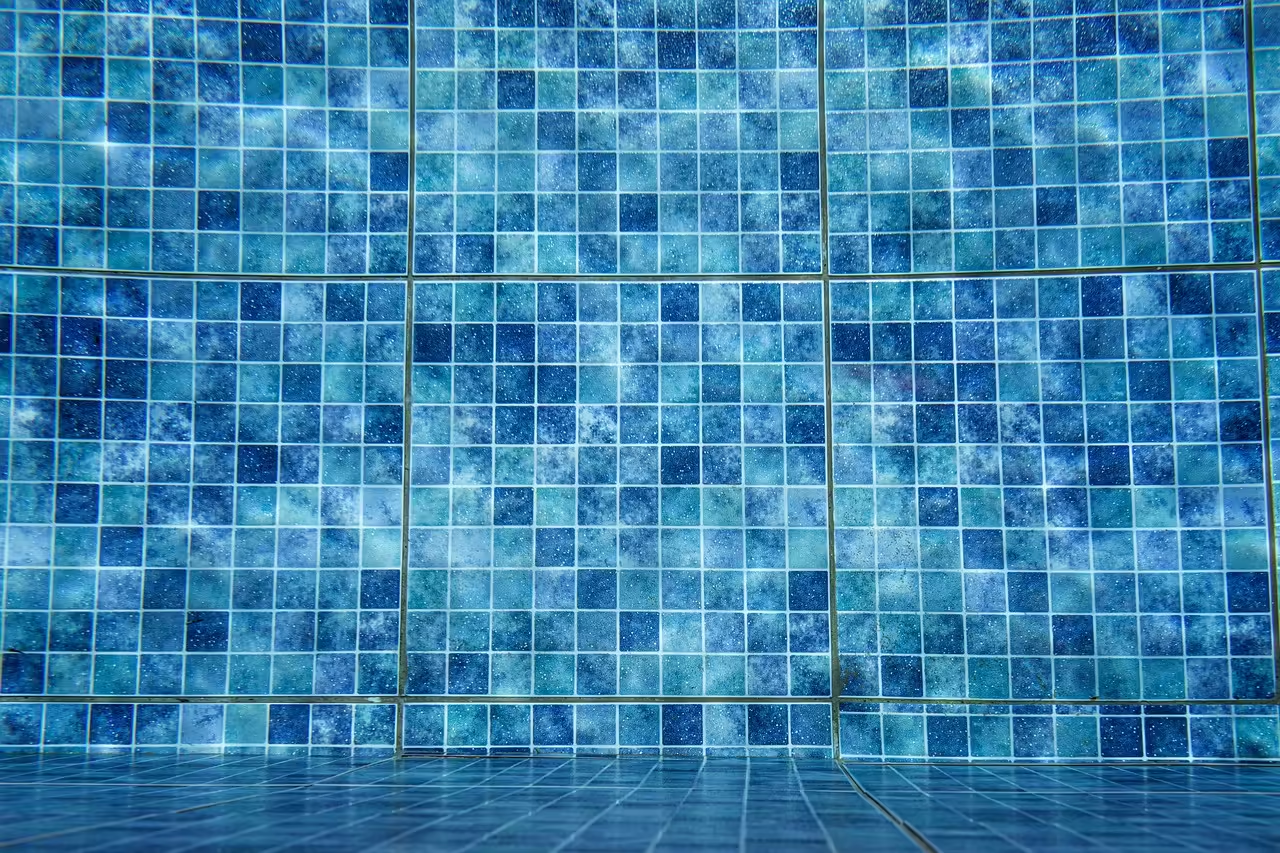Rehabilitating swimming pools is an essential process to prolong their useful life and keep them in proper condition. This article discusses the benefits, common problems and different types of rehabilitation that exist. In addition, it will explore the materials available, the rehabilitation process and the importance of aftercare. It will also provide tips on how to choose the right professionals to carry out this work. You can complete the information with this article that discusses how to refurbishing an old swimming pool
Importance of rehabilitating a swimming pool
The rehabilitation of a swimming pool is essential to ensure its functionality and aesthetics. This process not only includes solutions to visible problems, but also has an impact on structural and safety aspects.
Structural benefits
The benefits of structural rehabilitation are remarkable. By addressing problems such as cracks or deterioration, the life of the pool is extended.
- Repair of the vessel structure.
- Replacement of damaged pipes.
- Reinforcement of structural elements.
Aesthetic update
The aesthetics of a pool can become outdated over time. Renovating its appearance not only improves its visual appearance, it can also increase the value of the property.
- Installation of new coatings.
- Modernization of decorative accessories.
- Selection of contemporary colors and finishes.
Improved safety
Deterioration in a swimming pool can represent a risk for users. Rehabilitating a pool ensures a safer and more functional environment.
- Elimination of sharp edges.
- Correction of worn coatings.
- Reinforced structural stability.
Common pool problems
Swimming pools, despite their attractiveness, face a number of problems that can compromise their functionality and aesthetics. Recognizing these drawbacks is crucial to keeping a pool in good condition.
Coating wear
Over time, pool liners deteriorate. This wear and tear can result from constant exposure to water and sun. Loss of color and the formation of cracks are symptoms of a liner that needs to be renewed, which can affect the waterproofing and overall aesthetics of the pool.
Cracks in the vessel
Cracks in the glass are another common problem. These can arise from temperature changes, ground settlement or impact. Cracks not only compromise the structure, but can also increase the risk of leaks, which can cause additional damage.
Filtration system failures
Filtration systems are essential to maintain water quality. Failures in these installations can lead to cloudy water and health problems. Identifying and fixing these problems is key to the proper functioning of the pool.
- Perform periodic inspections to detect faults.
- Clean filters regularly to ensure optimum performance.
Modern solutions
Retrofitting filtration systems can include the installation of more efficient technology. High-pressure filtration systems and cartridge filters are options that can significantly improve water quality and reduce energy consumption.
System maintenance
Proper maintenance is vital to extend the life of filtration systems. This includes regular check-ups, cleaning and replacement of worn components. Having qualified professionals perform this maintenance can ensure efficient and long-lasting operation.
Types of rehabilitation
The rehabilitation of a swimming pool can take different approaches, depending on the specific needs of each facility. The two main categories are structural rehabilitation and aesthetic rehabilitation, each with its own particularities.
Structural rehabilitation
This type of rehabilitation focuses on solving problems that affect the physical integrity of the pool. It involves actions such as repairing cracks, replacing deteriorated pipes and reinforcing the structure of the pool. Proper intervention ensures that the pool is safe and functional in the long term.
Aesthetic rehabilitation
Seeking to improve the visual appearance of the pool, this rehabilitation focuses on finishes and decorative details. It is an opportunity to renew the overall look and choose more modern and attractive options.
Colors and finishes
The choices in colors and finishes are extensive. Shades that harmonize with the surroundings and textures that enhance the beauty of the pool area can be selected. The right choice can significantly transform the space.
On-trend coatings
- Reinforced sheet
- Fiberglass
- Gresite
- Microcement
Liner trends are constantly evolving, allowing homeowners to adapt their pools to current styles.
Swimming pool lining materials
The choice of suitable materials for lining swimming pools is fundamental, since they affect both durability and aesthetics. There are multiple options on the market, each with its own specific characteristics and advantages.
Reinforced sheet
This material consists of waterproof membranes that adapt to the shape of the pool shell. Its installation is simple and has gained popularity due to its effectiveness.
Advantages and maintenance
- Easy to clean and maintain.
- High resistance to chemicals and weathering.
- Adaptable to different shapes and sizes of pools.
Fiberglass
A material that provides a smooth and durable surface. Fiberglass is highly impermeable and is noted for its resistance to corrosion.
Features and applications
- Smooth surface to the touch, avoiding scratches.
- Ideal for hot and humid climate zones.
- Quick installation and less costly in the long run.
Gresite
Gresite is known for its aesthetic finish. This material is used to give an attractive finish to the pool.
Applications and care
- Recommended for custom-designed pools.
- It requires regular maintenance to avoid stains.
- It does not act as a waterproofing agent by itself.
Alternative options
Microcement
This continuous coating offers a modern appearance and is highly impermeable. It is applied directly over the existing substrate, significantly transforming the space.
Continuous coatings
Materials such as pebble are also used, providing durability and an attractive aesthetic finish. Its maintenance is similar to that of microcement, making it an easy choice for homeowners.
Rehabilitation process
Rehabilitating a pool requires a methodical process to ensure that all existing problems are addressed and the end results are optimized.
Initial evaluation
The first step in this process involves conducting a detailed analysis. During this stage, different aspects of the pool are reviewed to detect issues that require attention.
Professional inspection
It is essential to have an expert perform a thorough inspection. This professional will evaluate the condition of the structure, filtration systems and possible visible damage, providing an accurate diagnosis.
Detailed planning
Once the assessment has been completed, a work plan should be developed that addresses all necessary interventions. It is essential that this planning considers every detail to avoid surprises along the way.
Budget and schedule
The budget should include material and labor costs, as well as a schedule specifying the start and completion dates for each phase. This will provide clarity and facilitate project management.
Stages of work
The rehabilitation process is divided into several stages that must be carefully followed. These include both the preparation of the space and the necessary repairs.
Pre-cleaning
Before beginning any work, it is vital to perform a thorough cleaning of the pool shell. This action will remove debris that may interfere with the new liner or repairs.
Repair and finishing
The repair phase is crucial, as structural and finish problems must be addressed. New liners will be applied and adjustments will be made to ensure that the pool functions properly and has a renewed appearance.
Post-rehabilitation maintenance
Ongoing maintenance after rehabilitation is crucial to ensure the durability and good condition of the pool. This process involves some periodic tasks to maintain the water quality and the integrity of the structure.
Regular cleaning
Constant cleaning of the pool is essential to remove leaves, dirt and other debris that can affect water quality. This maintenance includes:
- Remove solid debris from the surface.
- Clean the pump filters regularly.
- Clean the walls and bottom to avoid algae accumulation.
Chemical control of water
The chemical balance of the water should be monitored regularly, ensuring that the levels of chlorine, pH and other elements are maintained in safe ranges. Recommended:
- Perform weekly water tests.
- Adjust chemicals according to the results obtained.
- Avoid skin and eye irritation by controlling water chemistry appropriately.
Periodic inspection of the structure
In addition to cleaning and chemical control, it is essential to carry out regular inspections of the structure. These checks will identify possible cracks or wear and tear in the pool. It is suggested:
- Check the integrity of the coating.
- Inspect filtration and heating components.
- Keep track of any visible changes in the pool structure.
The rehabilitation of a swimming pool involves a significant investment that varies according to multiple factors. It is essential to know the associated costs and to develop a budget tailored to the needs of the project.
Costs and budgets in rehabilitation
Factors influencing cost
Several elements affect the final price of the rehabilitation of a swimming pool. Some of the most relevant are:
- Current state of the pool.
- Pool size.
- Type of rehabilitation required (structural, aesthetic, etc.).
- Materials selected for coatings.
- Labor costs in the region.
Price comparison in Madrid
In the Spanish capital, the prices to rehabilitate a swimming pool range between 10,000 and 30,000 euros for single-family units. These values can fluctuate according to the characteristics of the pool and the services offered. It is advisable to compare several offers in order to obtain the best value for money.
Tips for choosing professionals
Selecting the right company for pool rehabilitation work is critical to ensure optimal results. The following are key criteria for making an informed choice.
Criteria for selecting a company
- Verify experience in the sector. A solid track record provides confidence in the quality of service.
- Evaluate references and reviews from previous customers. Reviews are a good indicator of customer satisfaction.
- Request a detailed quotation. It is essential to know what is included and the associated costs to avoid surprises.
- Check the warranty of the work performed. This ensures that any inconvenience that arises can be solved without additional costs.
Importance of experience and reputation
Experience in the area of pool rehabilitation is a determining factor. Companies with years of experience tend to have a deeper understanding of common problems and their solutions. Also, the reputation of professionals can provide confidence in the quality of their work.
Researching the selected company, including certifications and professional associations, can provide greater assurance of their competence and commitment to providing quality service.


